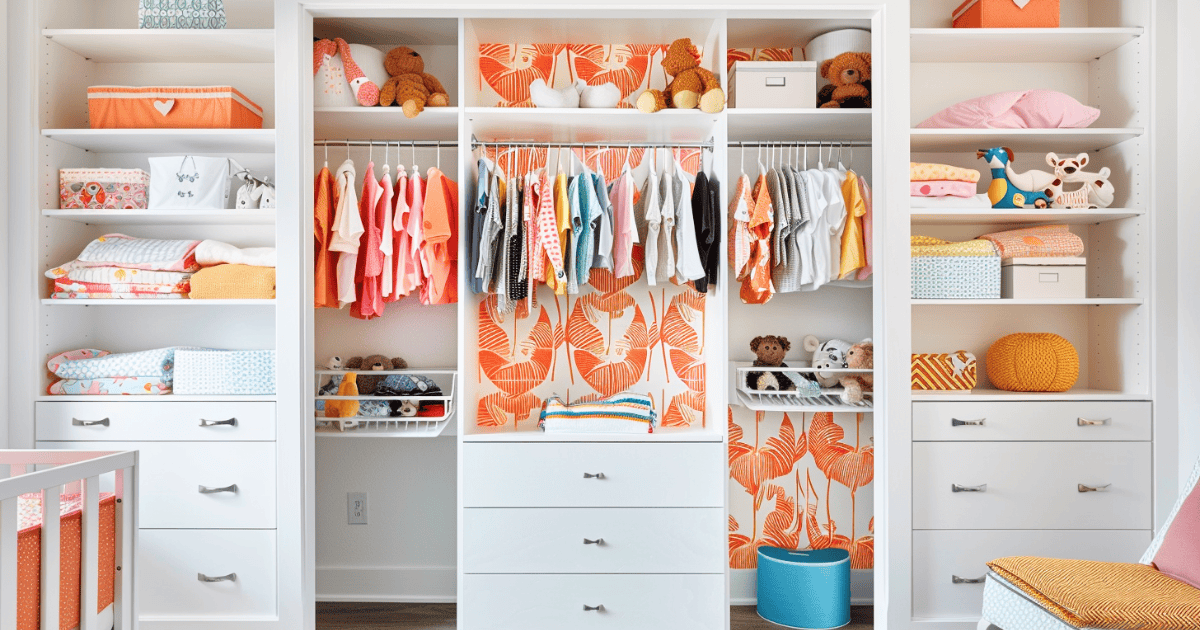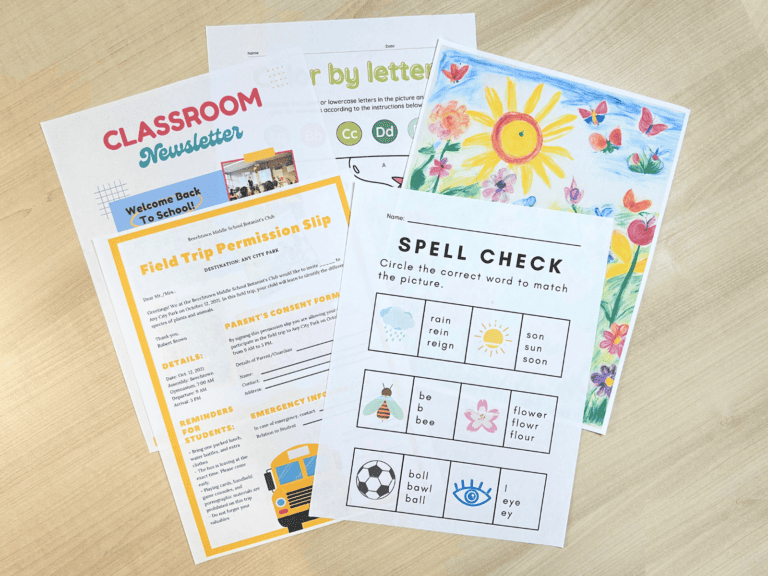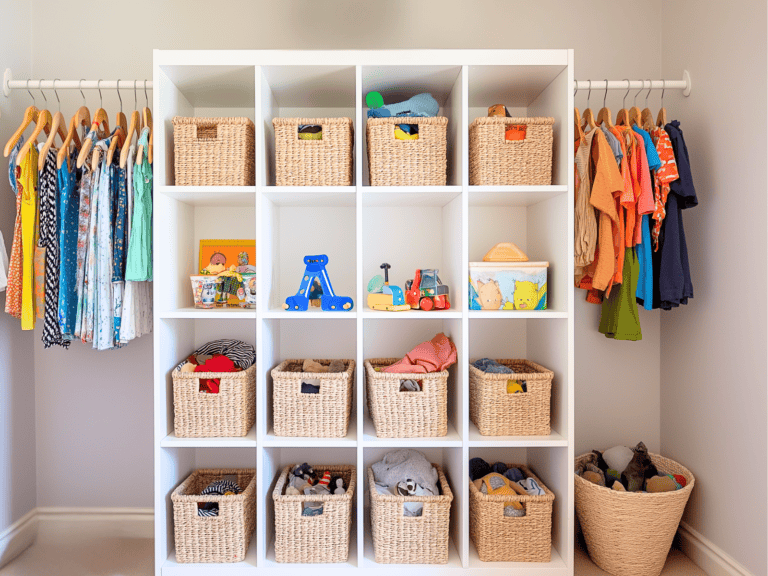22 Brilliant Kids’ Closet Organization Ideas
Tired of the endless battle to organize your kids’ clothes? Unlock the secrets to a fun and clutter-free closet with these kids’ closet organization ideas!
A well-designed space empowers your child with independence and responsibility, making clean-up an exciting game. With these brilliant tips, your child’s closet will become their favorite part of their room!
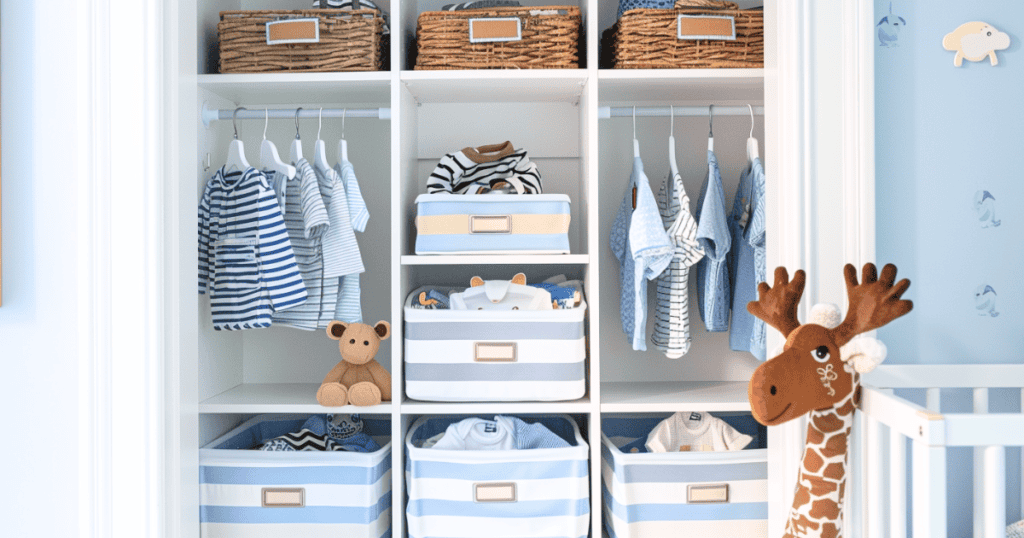
The Hidden Benefits of Closet Organization
Organizing your child’s closet does more than create a tidy space. As experts from Understood.org explain, it’s a fun way to teach important life skills and boost their development.
- Planning and Decision-Making: Kids learn to plan outfits, prioritize what to keep, and make choices about what to donate.
- Problem-Solving: They figure out the best way to arrange items and create solutions for storage challenges.
- Responsibility and Independence: An organized space empowers kids to take charge of their belongings and keep their closets tidy.
- Sense of Calm: A well-organized closet can create a peaceful environment, which is especially beneficial for children who struggle with focus or anxiety.
So, by creating a fun and organized space, you’re not just tidying up – you’re helping your child grow and learn!
Kids’ Closet Organization Ideas
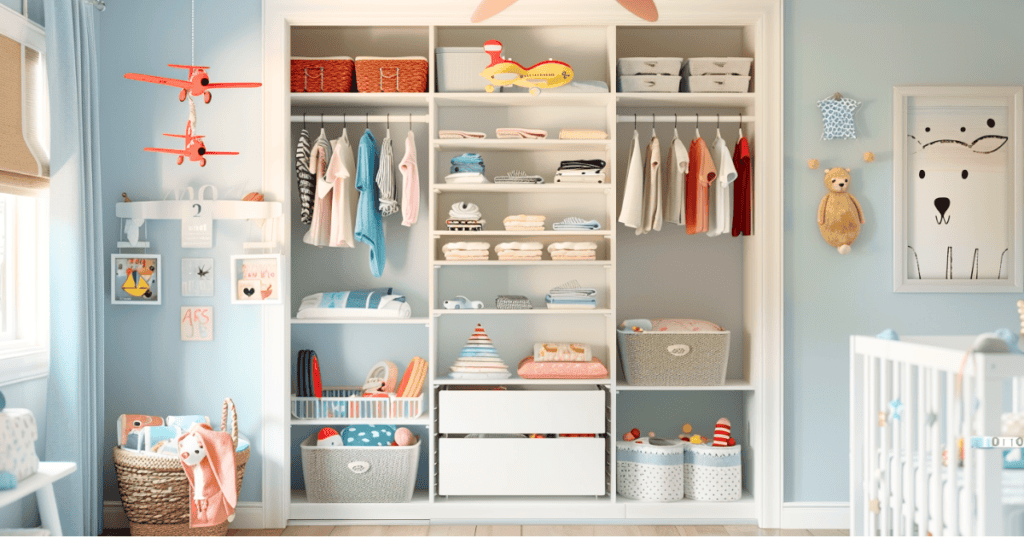
1. Choose a Theme
Transform your child’s closet into a world of imagination! Is your child a budding astronaut, a jungle explorer, or a princess in a fairy tale? Let their interests guide your design choices. Animal print hangers, glow-in-the-dark stars, and castle-shaped hooks are just a few examples of how to infuse personality into their space.
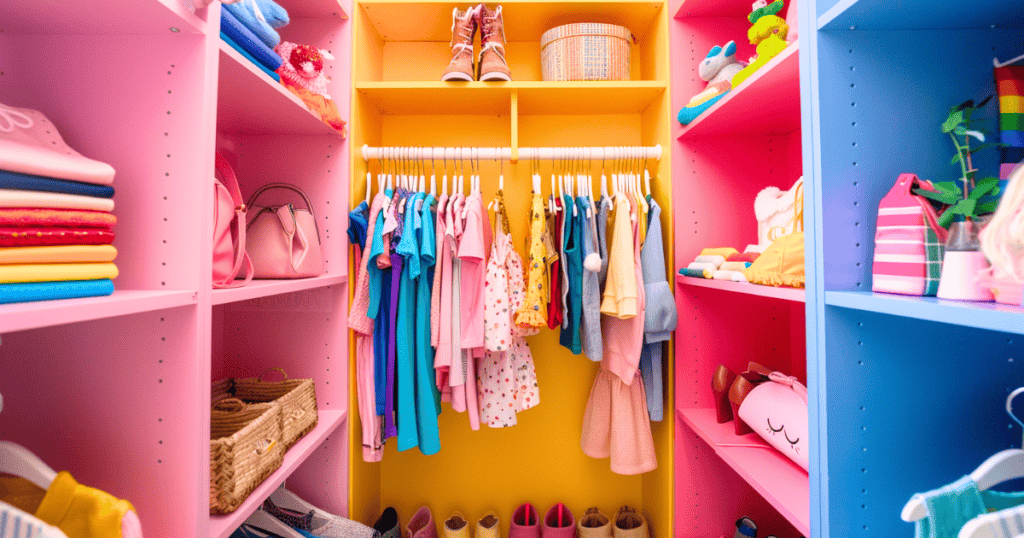
2. Incorporate Fun Elements
Who said organization can’t be playful? Ditch the boring neutrals and opt for vibrant colors and patterns. Bright hangers, whimsical drawer liners, and decorative storage bins instantly add personality and make tidying up more enjoyable. A playful rug, wall decals, or a funky light fixture can further enhance the fun factor.
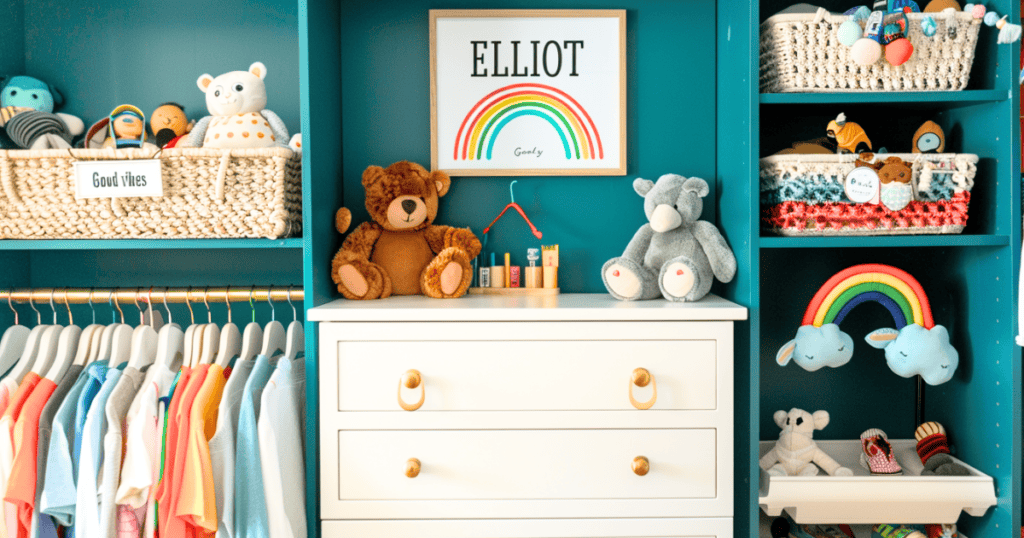
3. Personalize the Space
Make the closet truly theirs! Let your child take the lead in choosing labels, decorating bins, and adding their own special touches. This personal investment fosters a sense of ownership and pride, encouraging them to keep their space tidy. Displaying artwork, photos, or favorite toys adds a heartwarming touch and turns the closet into a mini-gallery of their life.

4. Utilize Adjustable Shelving
Flexibility is key in a child’s closet. Opt for adjustable shelving that can adapt as your child grows and their wardrobe evolves. Easily reposition shelves to accommodate longer dresses, bulkier sweaters, or additional storage bins. This simple adjustment ensures the closet remains functional for years to come.

5. Add Hooks and Pegs
Make it easy for little hands to reach! Install hooks and pegs at a height accessible to your child. These handy tools can hold jackets, backpacks, hats, and other accessories. Encourage independence by letting them choose the colors and designs of their hooks.

6. Incorporate Double Hanging Rods
Double the hanging space, double the fun! Double hanging rods maximize vertical space, allowing you to hang shirts on the top rod and pants or skirts on the bottom. This simple addition instantly creates more storage and helps maintain order in the closet.
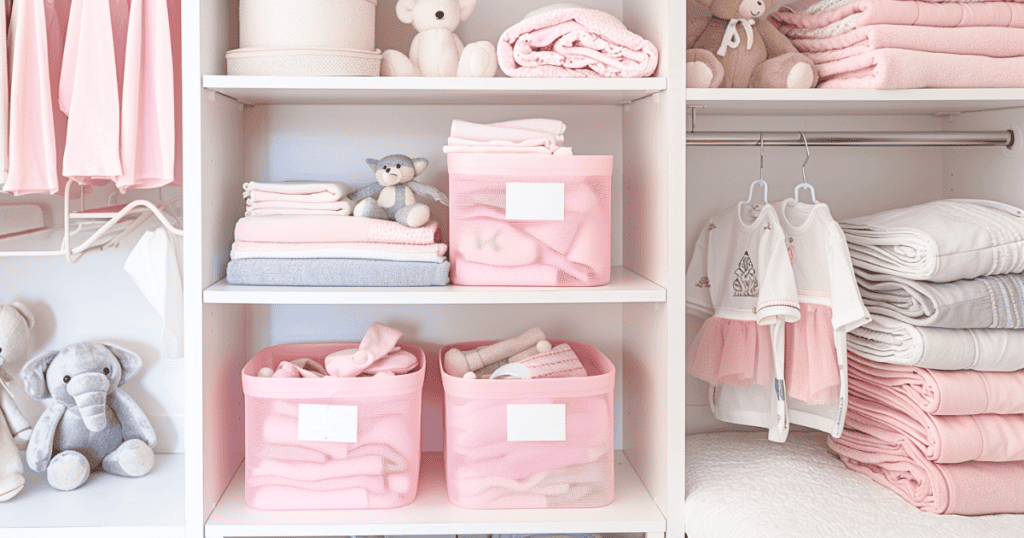
7. Use Clear Storage Bins
Clear storage bins are a game-changer for kids’ closets. They provide a visual inventory of what’s inside, making it easy for children to find what they need without creating a mess. These bins are perfect for storing out-of-season clothing, bulky items like sweaters, or even toys. Label each bin with clear text or pictures so everyone knows where things belong.
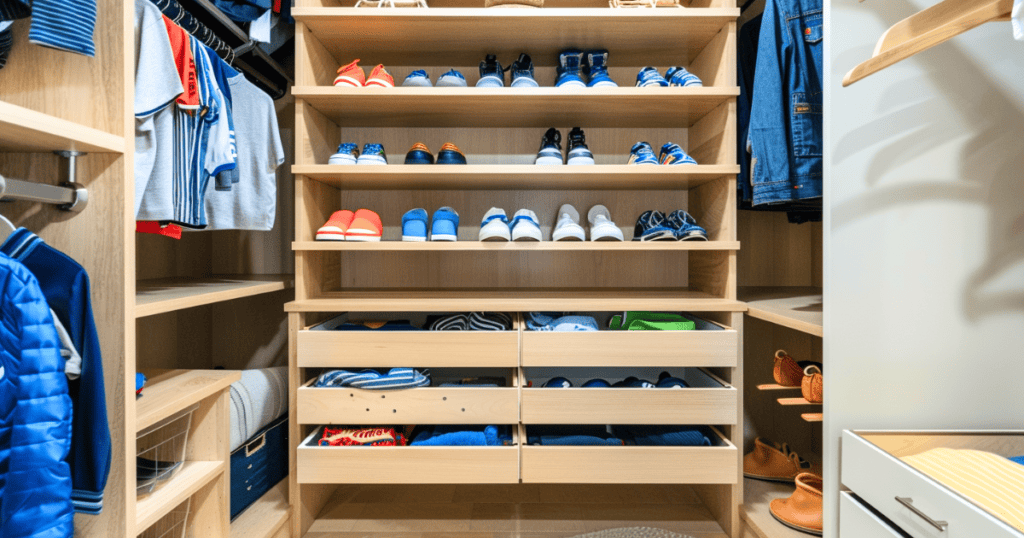
8. Create a Shoe Station
Tired of tripping over shoes scattered across the room? A designated shoe station is the solution. Dedicate a shelf, cubby, or bin for shoes. You can organize them by type (sneakers, sandals, boots), or frequency of use. Encourage your child to return their shoes to the station after each wear.
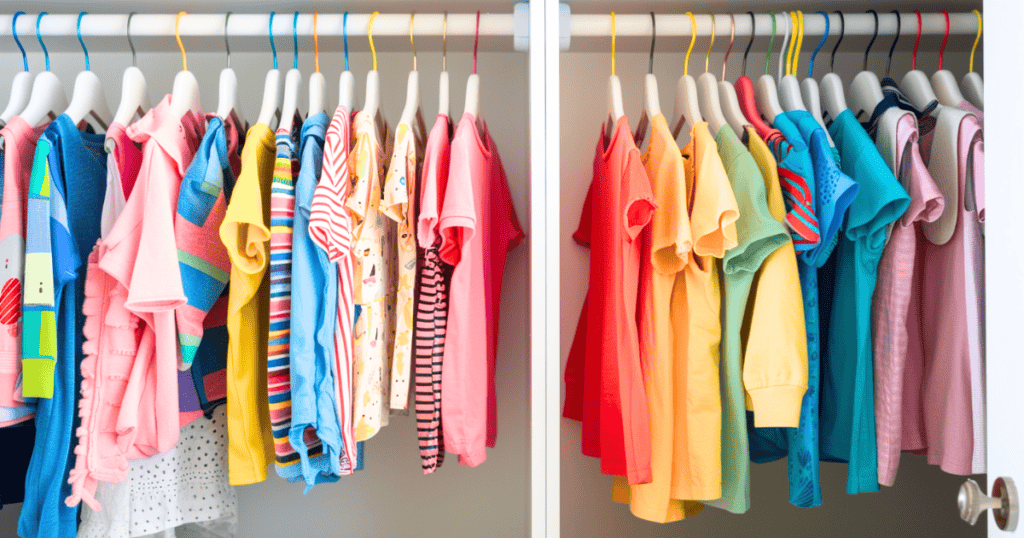
9. Implement a Color-Coding System
Color coding is a fun and intuitive way to organize clothes. Assign a specific color to each category (e.g., blue for shirts, green for pants) or each child if it’s a shared closet. You can use color-coded hangers, bins, or labels. This simple system helps kids quickly find what they’re looking for and makes putting clothes away a breeze.
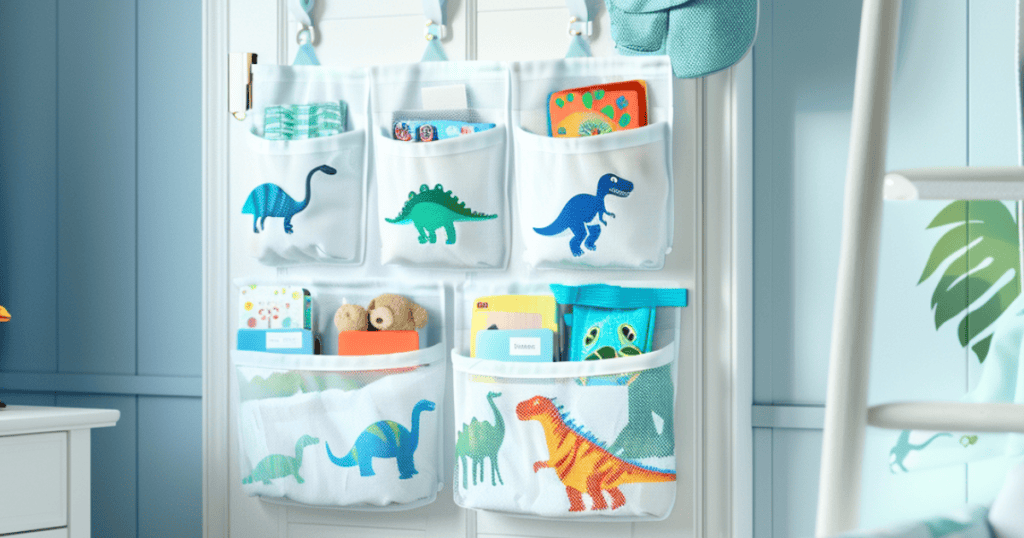
10. Use Over-the-Door Organizers
Don’t let valuable door space go to waste! Over-the-door organizers can hold shoes, accessories, or small toys. They’re a great option for smaller closets or when you need a little extra storage. Choose organizers with clear pockets for visibility and easy access.

11. Label Everything
Labels are the unsung heroes of closet organization. They provide clear guidance for where things belong and make tidying up a breeze. Get creative with labels! Use pictures for younger children, personalized tags with their names, or even fun shapes and designs. The key is to make labeling engaging and easy to understand.
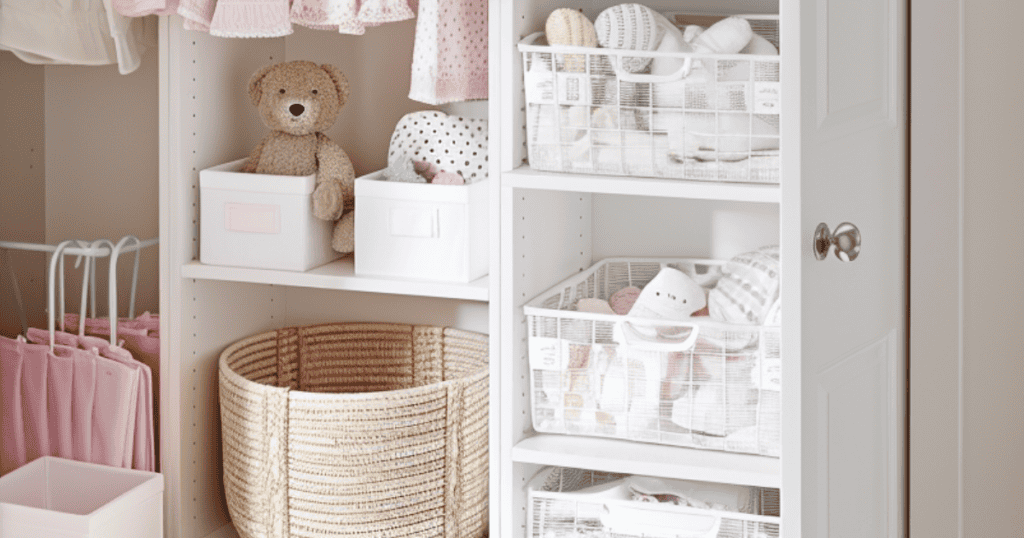
12. Incorporate a Laundry Bin
Make laundry day a breeze! Keep a designated laundry bin within the closet to encourage your child to toss dirty clothes directly into it. This eliminates the need for clothes to pile up on the floor and makes transporting laundry to the washing machine easy. Choose a bin that matches the closet’s aesthetic and is easy for your child to use, whether it’s a simple basket, a pull-out hamper, or a canvas bag.
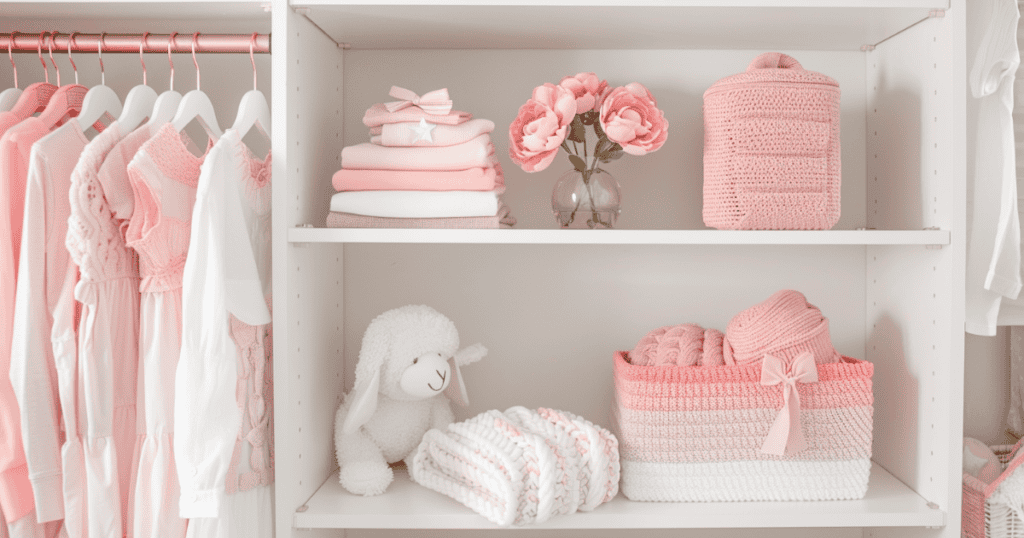
13. Repurpose a Bookcase
An old bookcase can be repurposed as a versatile closet organizer. Remove some shelves to create hanging space for clothes, use baskets or bins on lower shelves for toys and shoes, and add hooks to the sides for bags or accessories. You can even paint the bookcase to match the closet’s theme or your child’s favorite color.
Bonus Tip: For a more affordable closet solution, consider using an Ikea Billy Bookcase. Ikea Billy Bookcases are a popular choice for DIY closet organizers because they are sturdy, relatively inexpensive, and come in a variety of sizes.
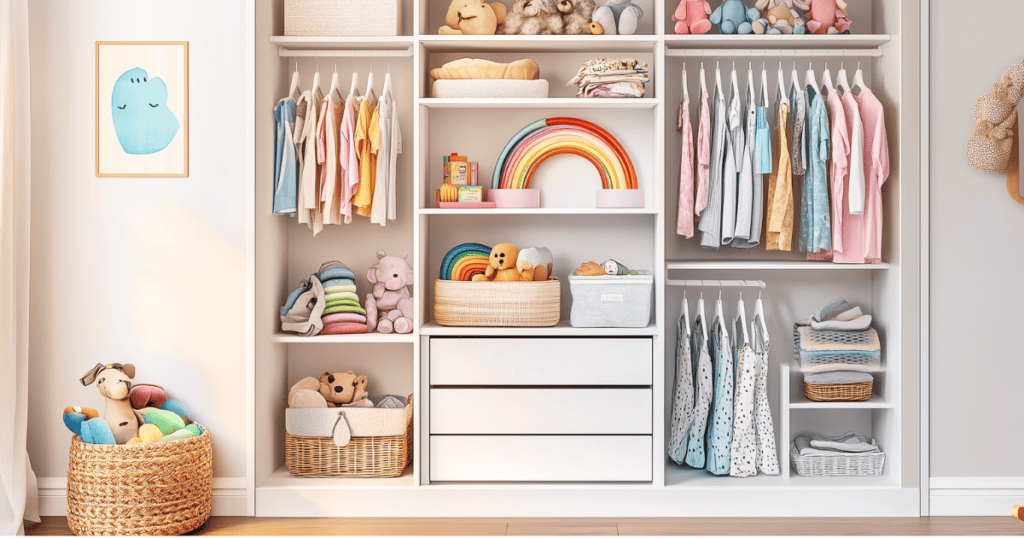
14. Install Pull-Out Drawers
Pull-out drawers make getting dressed a breeze. These drawers offer easy access to items stored at the bottom of the closet, eliminating the need for kids to rummage through piles of clothes. Store socks, underwear, pajamas, or even smaller toys in these drawers for convenient access and a neat appearance.
15. Incorporate Seasonal Storage
Don’t let out-of-season clothing take up valuable closet space! Rotate clothes and accessories seasonally, storing away items that won’t be used for a few months. Utilize vacuum-sealed bags to compress bulky items like sweaters and jackets or place them in bins on higher shelves. This rotation frees up space and makes it easier for your child to find clothes appropriate for the current weather.
16. Create a Dressing Area
Turn your child’s closet into a mini dressing room! Include a mirror and hooks at their height, so they can easily try on clothes and get ready independently. Consider adding a small stool or bench for them to sit on while putting on shoes. Personalize the space with a themed mirror, a fun rug, or a colorful stool to make getting dressed a joyful experience.
17. Utilize Corner Space
Corners are often an overlooked area of the closet, but they hold significant potential for extra storage. Install corner shelves to house books, toys, or folded clothes. Hang hooks for backpacks or larger items like sports equipment. If space permits, consider a corner hanging rod for additional clothing storage.
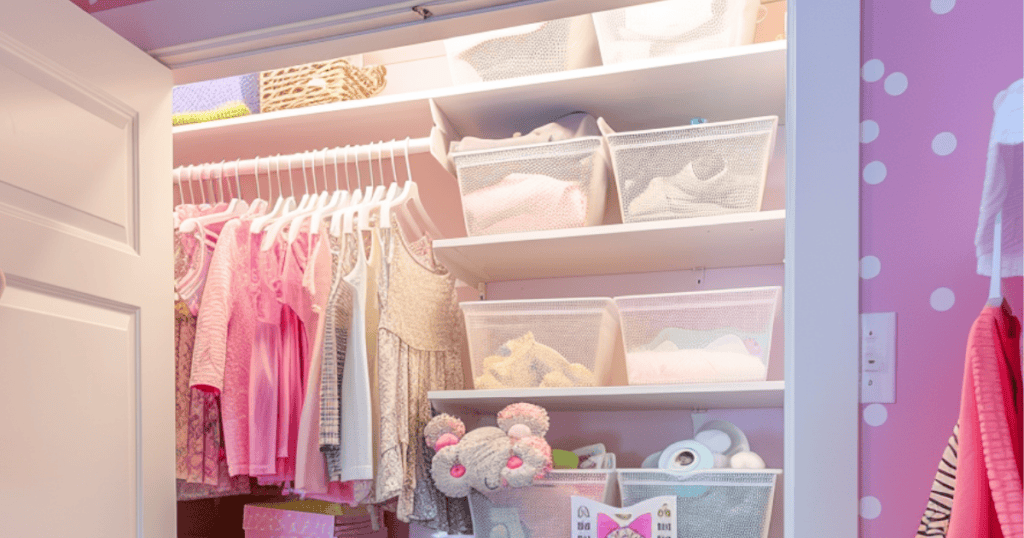
18. Add Lighting
Proper lighting is essential for a functional closet, especially for kids. It helps them see clearly, find what they need, and avoid stumbling in the dark. Consider installing LED strip lights along shelves, a motion-sensor light that turns on automatically when the door opens, or even a fun, decorative lamp to add a touch of personality.
19. Under-Bed Storage: Maximize Space with Bins or Drawers for Bulky Items
Don’t forget about the valuable storage space under your child’s bed! Slide-out bins or drawers are perfect for storing out-of-season clothing, extra blankets, or bulky toys. Choose clear containers for easy visibility or label opaque ones for quick identification.
20. DIY Projects with a Twist
Transform closet organization into a fun craft project! Repurpose an old trunk as a “treasure chest” for dress-up clothes, adding a touch of magic to playtime. Hang a “clothesline” with clothespins to display favorite outfits, artwork, or photos. Get creative with DIY labels using colorful paper, stamps, or stencils.
21. Organization Hacks for Tiny Baby Clothes
Baby clothes are adorable but can quickly overwhelm a closet. Use drawer dividers to separate onesies, sleepers, and outfits by size. Hang tiny hangers or install a lower rod specifically for baby clothes. Roll onesies and store them in small bins for easy access. Utilize hanging shoe organizers to store socks, bibs, and other small accessories.
22. Shared Closet Solutions for Siblings
Sharing a closet can lead to sibling squabbles. Create designated sections for each child using different colors, labels, or even a curtain divider. Assign drawers, shelves, and hanging space fairly. Encourage each child to take responsibility for their own section, promoting independence and avoiding conflicts.
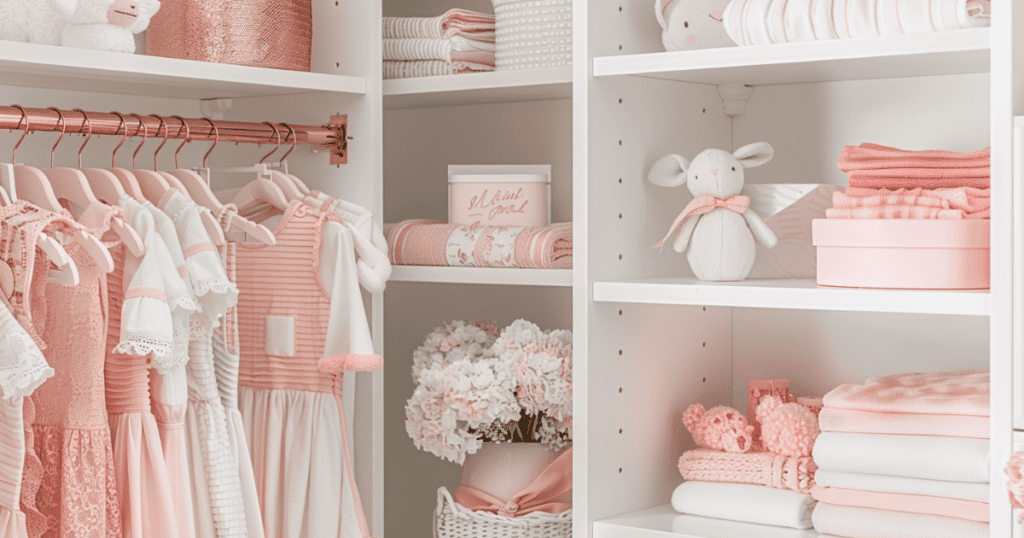
FAQs
How often should I declutter my child’s closet?
Aim to declutter your child’s closet at least twice a year, ideally before the change of seasons. However, you might need to do it more often for younger children who grow quickly.
What are the best storage solutions for small closets?
For small closets, prioritize vertical space with shelving, hanging organizers, and door-mounted storage. Consider using under-bed storage for bulky items. Opt for slim hangers and multi-functional furniture like a storage bench that doubles as seating.
What are some budget-friendly closet organization ideas?
Repurposing items you already have is a great way to save money. Use old shoeboxes for storage, decorate cardboard boxes with wrapping paper, or repurpose jars and containers for small items. You can also find affordable storage solutions at thrift stores or discount retailers.
Any tips for creating DIY closet organizers?
Get creative with DIY projects! Build simple shelves out of wood or repurpose crates for storage. You can also sew fabric bins or create your own labels and tags. Plenty of online tutorials and resources guide you through the process.
Are there specific organization tips for different age groups?
Absolutely! Toddlers need low bins and easy-to-reach hooks. Older kids might prefer more drawer space or a dedicated shoe rack. Teenagers might want a full-length mirror and a designated space for accessories. Tailor your organization solutions to your child’s age and abilities.
You might also like Simple Ways To Organize Kids School Papers.

